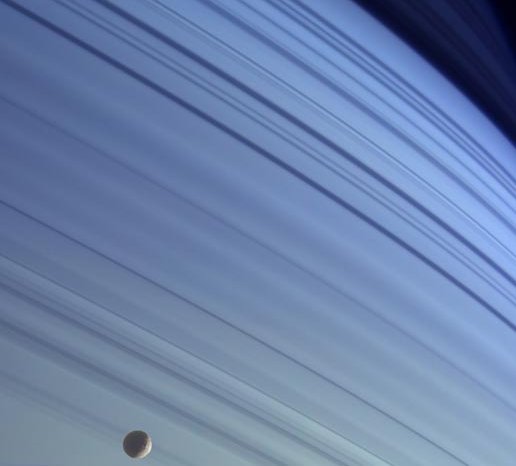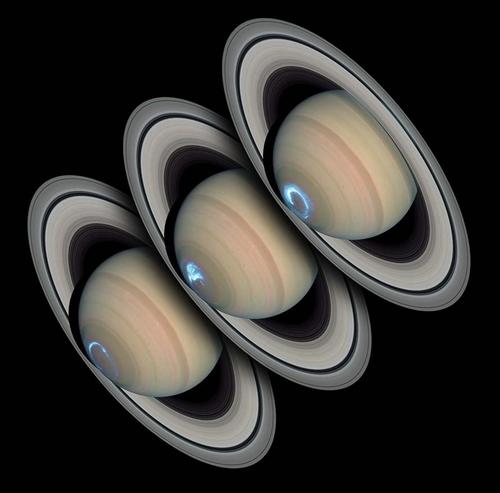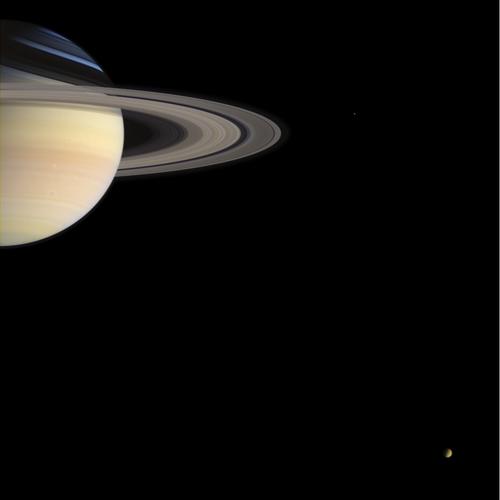
At any rate, the Cassini mission has delivered some of the most stunning photos I’ve ever seen. This lead in image is the moon Mimas against Saturn’s blue Northern atmosphere with shadows from the rings projected onto the “surface” of Saturn. Other amazing images I’ve been paying attention to are images like this composite image showing Saturn’s auroras.

Or this amazing image of Saturn and two of its moons imaged on December 24th.
Oh, and as long as we are showing images of other worldly landscapes, there is this rather impressive image taken by one of the Mars rovers after it had navigated back to the impact site of the spacecraft’s heat-shield.

These two missions, the Mars rovers and Cassini have done more good for NASA than they could have hoped for. I would love to see more missions of this type or even a return to the moon to establish visible/radio telescopes in dark craters on the moon which would be shielded from Earth. Additionally, if there is significant amounts of helium-3 on the moon, it would make for a good fueling point for missions to the other planets among other potential basic science payoffs. However, I do have significant objections to President Bush’s plans to send astronauts to Mars. The scientific payoff and return on investment seems to be much less clear to me on that plan and given our other pressing financial needs, I cannot support it. We are spending ever larger amounts of money in the middle east, social security is in a financial mess and the dollar is slipping to levels against other currencies not seen in years. That said, this post is about scientific exploration, so let me get back on point. Both Mars rovers have a combined cost of approximately $820 million, while the current cost (todays dollars) of a manned mission to Mars is $20 billion. That would pay for almost 50 rovers which are showing a remarkable ability to maintain function even after a full year on the surface of Mars. Additionally, there is all the support equipment that would be needed for humans, the space for which could be occupied by scientific payloads. After all, robots do not need the same degree of radiation shielding that humans do, they don’t need to be fed, they don’t need to be watered, they don’t require medical care and in terms of actual mission simplicity robots are capable of handling much higher gravitational loads than humans. To top it all off, the additional payoffs for advanced robotic technology can be spun off for terrestrial applications.
Of course, I would rather see more of that money go into bioscience, but hey….I am willing to share with my physical science peers. <GRIN>